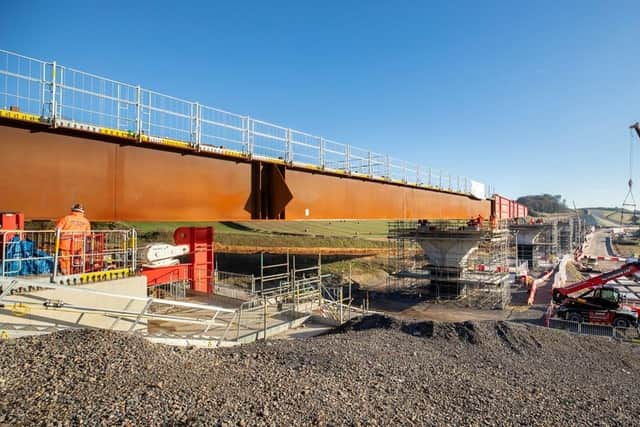HS2 releases drone footage showing construction of half kilometre viaduct in Wendover
and live on Freeview channel 276
HS2 has released drone footage showing the current state of the near half kilometre long viaduct it is constructing in Wendover.
Engineers started work on the viaduct above the Misbourne Valley this week and will continue to ready the bridge over the next year. Rail constructors will move a near half kilometre of bridge deck into position.
Advertisement
Hide AdAdvertisement
Hide AdVideo footage from the site in Wendover can be found in the video attached to this article.


HS2 says it will be the first major railway bridge in the UK to be built with a ‘double composite’ approach, which uses significantly less carbon-intensive concrete and steel than a more traditional design - and has allowed HS2 to halve the amount of embedded carbon in the structure.
It is one of 50 major viaducts linked to the controversial project.
Instead of using solid pre-stressed concrete beams to form the spans between the viaduct piers, the ‘double composite’ structure uses two steel beams sandwiched between two layers of reinforced concrete to create a lightweight and super strong hollow span, HS2 adds.
Advertisement
Hide AdAdvertisement
Hide AdDue to the length of the viaduct, the deck is being assembled in three stages, ranging from 90m to 180m sections, with each one pushed out from the north abutment before the next section is attached behind it.
This has been described as a delicate and painstaking process which means that the weight of the deck will increase with each push, up from an initial 590 tonnes this week to 3700 tonnes by the end of the year.
Tomas Garcia, HS2 Ltd’s head of civil structures said: “Double composite structures maximise the combined strength of steel in tension and concrete in compression. This approach has been tried and tested around the world and it’s great to see it applied on this scale for the first time in the UK at Wendover Dean.”
A winch is used to push the deck forward at a speed of around 9 metres per hour, sliding across Teflon pads to reduce friction – a material usually found to the surface of a non-stick frying pan. It is the longest deck slide on the HS2 project to date, HS2 has confirmed.